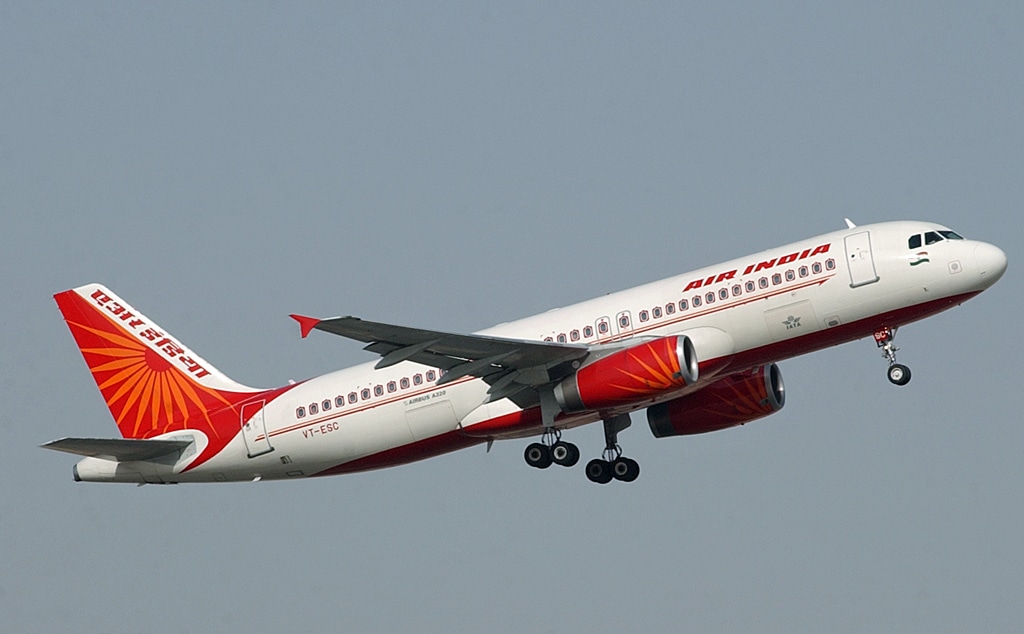Airlines
Air India removes these routes from its domestic flight network
The routes that Air India has now dropped from its domestic service

Air India, which is owned by Tata, is working to transform its business model. The airline has altered many aspects of its business practises as a result of this transition, including expanding its domestic flight network. According to a report by Business Standard, Air India has also eliminated some of the unprofitable routes from its domestic airline network as part of this shift. The action represents a significant improvement to the airline’s business. In the meantime, the airline’s footprint on metro-to-metro flights is increasing.
The routes that Air India has now dropped from its domestic service have an impact on several Indian states. According to a report, the routes that have been eliminated are Delhi-Ranchi, Delhi-Raipur, Delhi-Nagpur, Aizawl-Imphal, Bhopal-Pune, Kolkata-Dibrugarh, Kolkata-Dimapur, and Kolkata-Jaipur.
In many of these industries, Air India struggled with low demand, and in others, it was unable to earn a profit due to severe competition. According to the report, which relies on Cirium’s data, Air India ran 14 weekly flights in June that competed with IndiGo’s 58 and Go First’s 14 on the Delhi-Nagpur route. Similar circumstances held true for the route between Delhi and Raipur, where Air India ran 14 flights each week as opposed to 62 for IndiGo and 28 for Vistara.
According to an Air India representative, the carrier gains from metro flights because it is easier to fill the premium cabins in these sectors. Under its new CEO, Campbell Wilson, several routes have witnessed an increase in frequency, including Delhi-Amritsar, Delhi-Ahmedabad, Delhi-Lucknow, Delhi-Pune, and Kolkata-Guwahati. The airline is also seeking to increase its international route network. The Indian airline has resumed service on many of its routes to Europe and multiple cities in the USA.

Airlines
Sanctions & Engine Issues Ground Half of Russia’s A320neo fleet

Russia’s aviation sector, already strained by Western sanctions, faces another setback as nearly half of its Airbus A320neo family aircraft are grounded due to unresolved engine issues.
This development highlights the growing challenges for russia commercial aircraft in maintaining their fleets under the weight of global restrictions and limited access to spare parts.
Out of the 66 Airbus A320neo and A321neo jets in Russia, 34 are now out of service, according to the Kommersant business newspaper. These planes are powered by engines manufactured by Pratt & Whitney, a subsidiary of RTX Corporation.
DAMAC Air: Dubai’s New Luxury Airline Offers Free Flights for Registration
The engines are affected by a previously identified defect in the metal used for certain parts, prompting accelerated inspections and maintenance.
Sanctions have compounded the issue, blocking the supply of essential components from major manufacturers like Boeing and Airbus. Without proper maintenance, experts warn that these aircraft may face decommissioning as early as 2026.
COMAC Unveils Plans for the C929 to Rival Airbus and Boeing
Airlines like S7, which operates a significant portion of these grounded jets, plan to conserve the engines for future use during peak travel seasons. However, reports suggest that over 20 of S7’s Airbus planes have engines that have already reached the end of their operational lifespan. Recently, russia seeks assistance from kazakhstan’s airlines to bolster its domestic flights.
While some A320neo and A321neo planes in Russia are equipped with French-made LEAP engines, which are seen as less problematic, the challenges remain daunting.
The situation underscores the long-term impact of sanctions on Russia’s aviation sector and the increasing difficulties in keeping its modern fleets operational.
-

 Aviation2 months ago
Aviation2 months agoMicrosoft Flight Simulator Raises $3 Million to Bring Back the An-225 Mriya
-

 Airlines2 months ago
Airlines2 months agoQantas Engineers Stage Walkout Over Cost of Living Concerns
-

 Airlines2 months ago
Airlines2 months agoQatar Citizens Can Travel to the United States Without a Visa
-

 Aviation2 months ago
Aviation2 months agoQatar Airways bans these new Electronic Devices on plane
-

 Airlines2 months ago
Airlines2 months agoJapan Airlines Rolls Out Free Domestic Flights to International Passengers
-

 Defence2 months ago
Defence2 months agoWhich Country Has the Largest Fleet of Fighter Aircraft?
-

 Airport2 months ago
Airport2 months agoWestern Sydney Airport Welcomes Its First Plane After 6 Years of construction
-

 Travel2 months ago
Travel2 months agoQatar Airways Launches Four Additional Flights from Amsterdam








